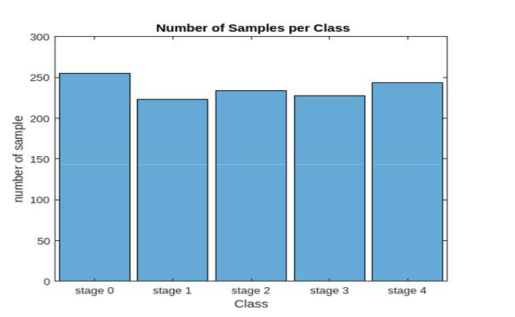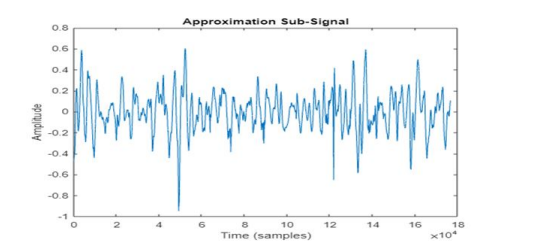
Figure 1: General block diagram of the method used
Knee osteoarthritis condition |
Number of knee joint sound records |
Healthy (stage 0) |
250 |
Minor (stage 1) |
80 |
Mild (stage 2) |
90 |
Moderate (stage 3) |
120 |
Severity (stage 4) |
110 |
Total |
650 |
Table 1: The Overall dataset obtained for each class
Roll No |
Selected features |
Domain of the features |
1 |
Peak2rms |
Time domain |
2 |
Snr |
Time domain |
3 |
spectral skewness |
Frequency domain |
4 |
Skewness |
Time domain |
5 |
Rms |
Time domain |
6 |
Kurtosis |
Time domain |
7 |
RDE std |
Time domain |
8 |
Spectral roll off point |
Frequency domain |
9 |
Spectral spread |
Frequency domain |
10 |
Spectral flux |
Frequency domain |
Table 2: Extracted features using audio feature extractor
Models |
Algorithm |
Accuracy (%) |
Lstm |
Lstm |
80.71% |
SVM |
Quadratic SVM |
81.8% |
Cubic SVM |
88.9% |
|
Fine gaussian SVM |
86.1% |
|
KNN |
Fine KNN |
87.5% |
Weighted KNN |
89.6% |
|
Ensemble |
Bagged Trees |
90.00% |
Table 3: Comparison between different models

Figure 1: General block diagram of the method used

Figure 2: SG electret microphone

Figure 3: single head stethoscope with its extension (a), the separated stethoscope head (b)

Figure 4: Sensor construction with microphone cable (a), unplugged stethoscope head (b)

Figure 5: Designed electronic stethoscope


Figure 7: sample of knee joint signal at different stage (normal, minor, mild, moderate and severe)

Figure 8: Filtered signal using 4th order Butterworth and notch filter


Figure 9: Training dataset of each class before performing class balance (a), and after performing class balance (b).

Figure 10: Augmented vibroarthrographic signal

Figure 11: Training models of bagging ensemble method [70]

Figure 12: New data on bagging ensemble method


Figure 13: EWT of a signal

Figure 14: Selected features

Figure 15: Confusion matrix of test set of different models
Tables at a glance
Figures at a glance